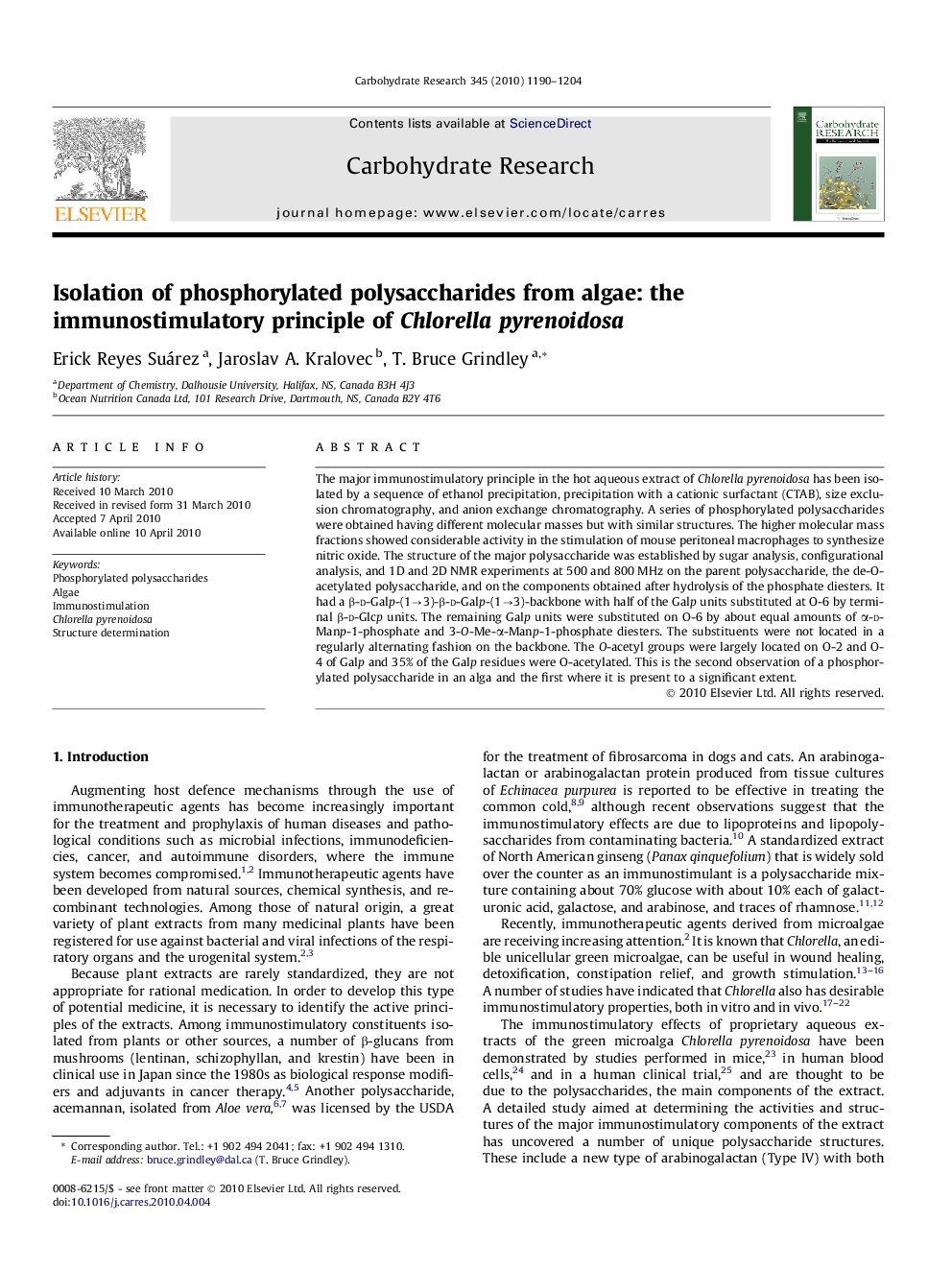| Article ID | Journal | Published Year | Pages | File Type |
|---|---|---|---|---|
| 1384767 | Carbohydrate Research | 2010 | 15 Pages |
The major immunostimulatory principle in the hot aqueous extract of Chlorella pyrenoidosa has been isolated by a sequence of ethanol precipitation, precipitation with a cationic surfactant (CTAB), size exclusion chromatography, and anion exchange chromatography. A series of phosphorylated polysaccharides were obtained having different molecular masses but with similar structures. The higher molecular mass fractions showed considerable activity in the stimulation of mouse peritoneal macrophages to synthesize nitric oxide. The structure of the major polysaccharide was established by sugar analysis, configurational analysis, and 1D and 2D NMR experiments at 500 and 800 MHz on the parent polysaccharide, the de-O-acetylated polysaccharide, and on the components obtained after hydrolysis of the phosphate diesters. It had a β-d-Galp-(1→3)-β-d-Galp-(1→3)-backbone with half of the Galp units substituted at O-6 by terminal β-d-Glcp units. The remaining Galp units were substituted on O-6 by about equal amounts of α-d-Manp-1-phosphate and 3-O-Me-α-Manp-1-phosphate diesters. The substituents were not located in a regularly alternating fashion on the backbone. The O-acetyl groups were largely located on O-2 and O-4 of Galp and 35% of the Galp residues were O-acetylated. This is the second observation of a phosphorylated polysaccharide in an alga and the first where it is present to a significant extent.
Graphical abstractFigure optionsDownload full-size imageDownload as PowerPoint slide
